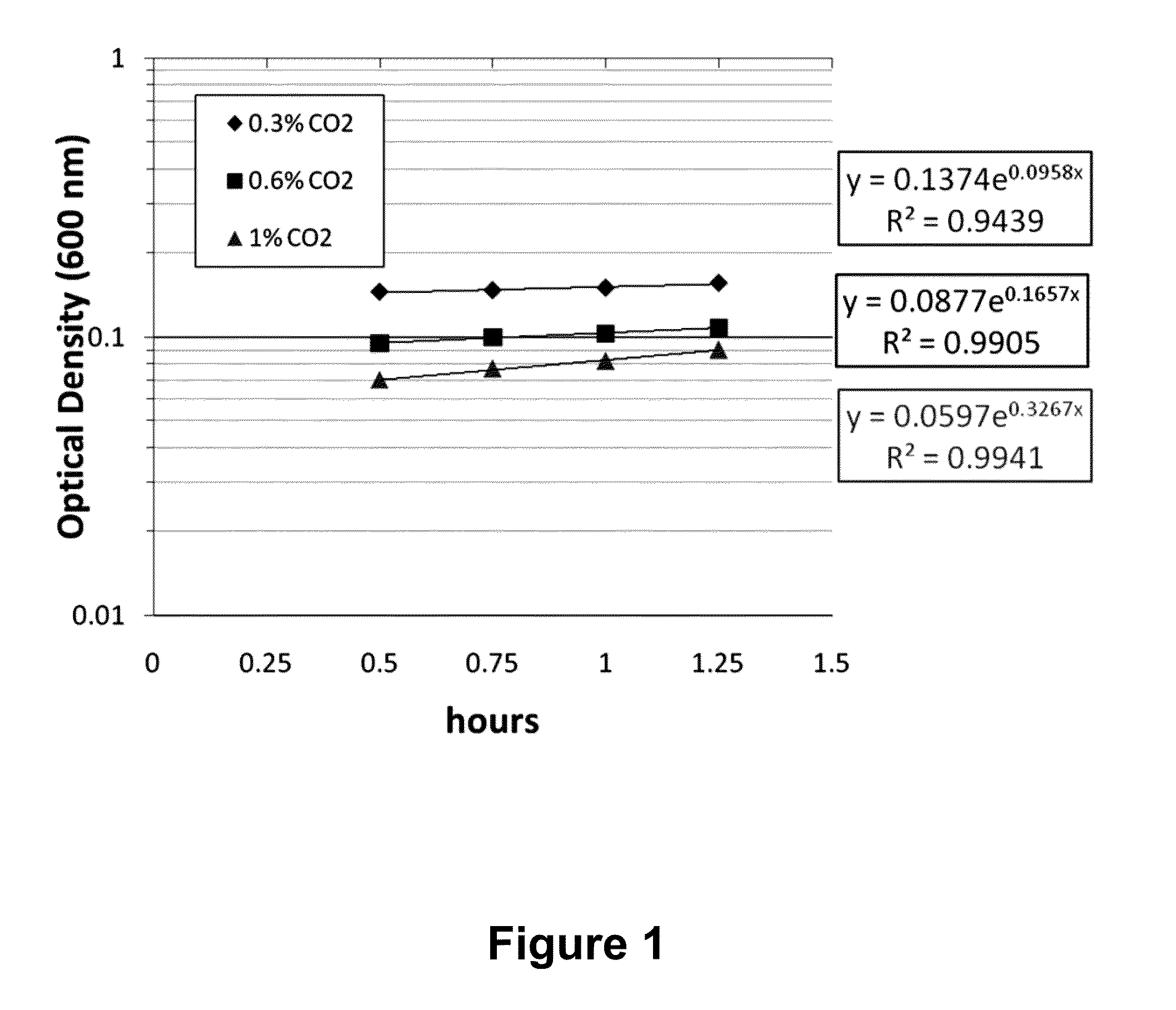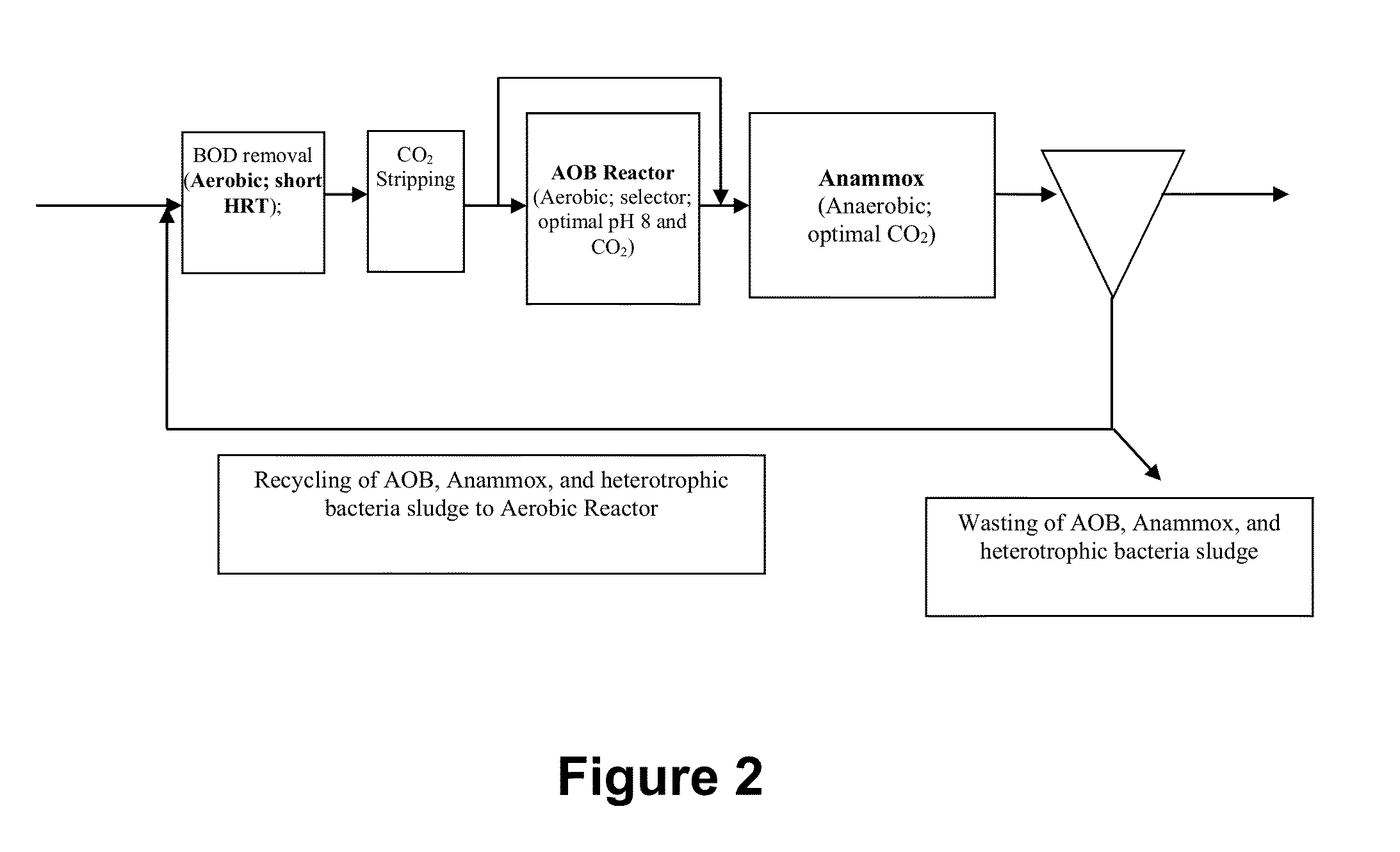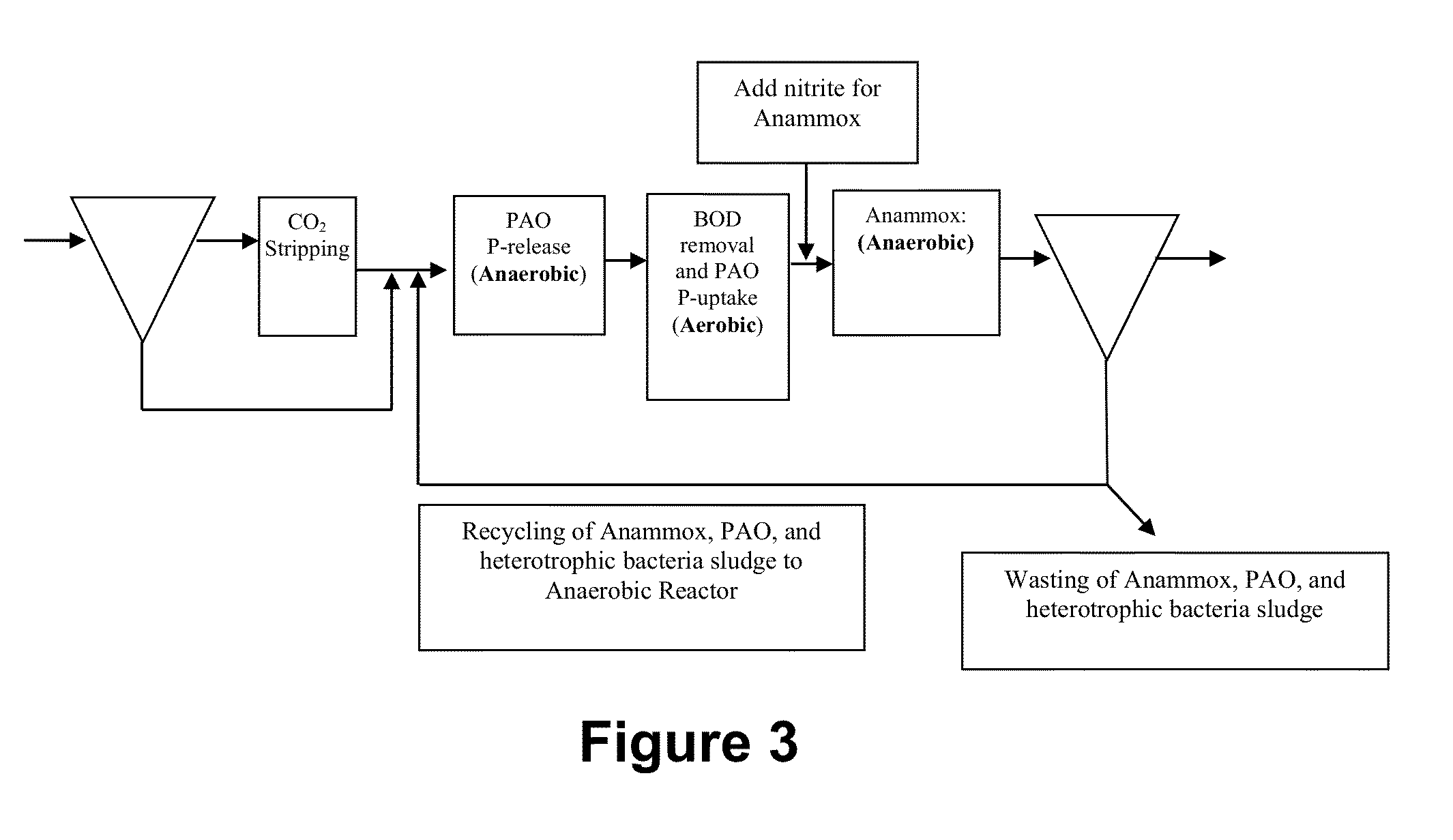METHOD AND SYSTEM FOR TREATING WASTEWATER AND SLUDGES BY OPTIMIZING sCO2 FOR ANAEROBIC AUTOTROPHIC MICROBES
a technology of anaerobic autotrophic microbes and wastewater treatment, applied in biological water/sewage treatment, filtration separation, separation processes, etc., can solve the problems of high cost of nitrification process in the activated sludge system of public owned treatment works (potws), uneconomical feasibility, and elevated dissolved cosub>2 concentration, etc., to improve the rate of biogas formation, excellent volatile solids destruction, and rapid growth
- Summary
- Abstract
- Description
- Claims
- Application Information
AI Technical Summary
Benefits of technology
Problems solved by technology
Method used
Image
Examples
example 1
Optimizing CO2 Concentrations and Using Optimized CO2 Concentrations in Wastewater Treatment Systems
[0049]Anammox bacteria are thought to have a fastest doubling time of 12 days, but these bioreactors are operated with 5% CO2 in the headspace. This elevated level of gas phase CO2 dictates the dissolved CO2 in these reactors, which inhibits the specific growth rate of these bacteria.
[0050]A lab-scale bioreactor was operated in a special chamber with anaerobic conditions (oxygen-free N2 gas provided continuously at 100 ml / min and additions of sodium sulfide, a reducing agent) and about 0.6% CO2 in the gas phase (Coy CO2 controller). The lab-scale bioreactor was provided non-limiting ammonium and nitrite (100 mg / L as N) and phosphate buffer to ensure a neutral pH (about 7.6 to about 8). The bioreactor was mixed by use of a magnetic stir bar and stir plate. This bioreactor was used to enrich activated sludge with an estimated initial 0.5% Anammox bacteria to >95% Anammox bacteria in a f...
example 2
Optimizing CO2 Concentrations and Using Optimized CO2 Concentrations in Sludge Treatment Systems
[0068]CO2-reducing methanogens have been identified as the rate-limiting step in anaerobic digesters. Due to their slow specific growth rate (textbooks use a specific growth rate of about 0.35 d−1), anaerobic digesters are operated with a high safety factor of 5. The combination of slow specific growth and the safety factor was used for a recommended 15 day solids retention time for anaerobic digesters. However, anaerobic digesters are operated vessels with a confined head space, where the biogas is often used for mixing the contents. Typical biogas composition is about 50-60% methane, about 40-50% CO2, and low levels of H2O, N2, H2S, and H2. The extremely high concentration of CO2 in the headspace inhibits the specific growth rate of the methanogens and anaerobic autotrophic bacteria, such as the sulfate reducing bacteria (SRB) and acetogens.
[0069]Lab-scale anaerobic digesters were used ...
PUM
| Property | Measurement | Unit |
|---|---|---|
| doubling time | aaaaa | aaaaa |
| temperature | aaaaa | aaaaa |
| temperature | aaaaa | aaaaa |
Abstract
Description
Claims
Application Information
 Login to View More
Login to View More - R&D
- Intellectual Property
- Life Sciences
- Materials
- Tech Scout
- Unparalleled Data Quality
- Higher Quality Content
- 60% Fewer Hallucinations
Browse by: Latest US Patents, China's latest patents, Technical Efficacy Thesaurus, Application Domain, Technology Topic, Popular Technical Reports.
© 2025 PatSnap. All rights reserved.Legal|Privacy policy|Modern Slavery Act Transparency Statement|Sitemap|About US| Contact US: help@patsnap.com



